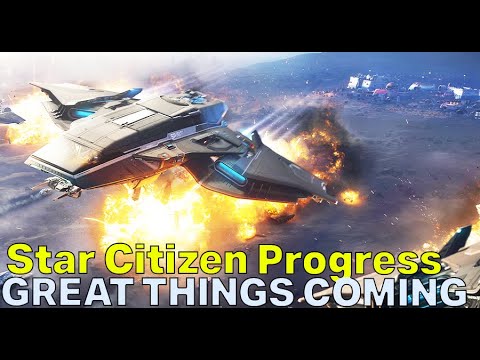In October, the teams at Star Citizen made progress in several areas including AI combat functionality, economy balancing, Vulkan subteam improvements, and engineering gameplay. Bug fixing, polishing animations, and implementing new features were key priorities, as the goal was to create a more immersive and enjoyable gaming experience for players.
In October’s monthly report for Star Citizen, the AI features team focused on bringing AI combat functionality from Squadron 42 to the NPCs of the persistent universe. They improved accuracy calculations, perception reactions, ammo management, hazard avoidance, medical behaviors, and combat tactics. Bug fixing was also a priority, addressing issues such as firing validation, AI reloading in cover, medical AI alignment, AI shooting while strafing, and a crash caused by navigation link raycasts. The team also implemented a new structure for AI combat dialogue and polished animations for Pyro’s female combatants and civilians.
The AI Tech team worked on the boids system and Apollo subsumption, fixing issues related to spawning and unspawning properties for agents, improving rules for flying groups, and updating collision avoidance logic for NPCs in conversation. The navigation Tech team made improvements in calculating and tracking positions on the navigation mesh and fixed various bugs related to cover locations and nav mesh tiles. The animation team delivered facial animations for combat AI, worked on creature animations, and started work on a racing flight suit and helmet.
The economy team continued to balance the profitability of commodities for Pyro and Stanton, reviewed and balanced the prices of vehicles and armor, and supported other teams on gameplay features like vehicle tractor beams and salvage contracts. The engine team focused on bug fixes and tackled performance and stability issues for the Vulcan subteam. The interactables team supported the development of new underground facilities called Distribution Centers, while the graphics VFX programming and Planet Tech team worked on the Vulkan subteam, improved the handling of ground vehicles, and began a tuning pass for ships and vehicles.
Other teams, such as the gameplay features team, mission features team, and vehicle features team, made progress on engineering gameplay, structural salvage, the Blockade Runner Global event, custom matches, and various missions and locations for Alpha 3.3. The narrative team polished AI behaviors in Pyro and planned future improvements for mission-givers, while the R&D team dedicated time to cloud shaping improvements, ground fog, and water simulations. Visual effects were also improved, particularly in water effects, and support was provided for presentations at CitizenCon.
Overall, October’s report highlighted progress in various aspects of Star Citizen development, from AI and gameplay features to visual effects and economy balancing. The teams focused on bringing new functionality and addressing bugs and stability issues, with the goal of creating a more immersive and enjoyable gaming experience for players.
